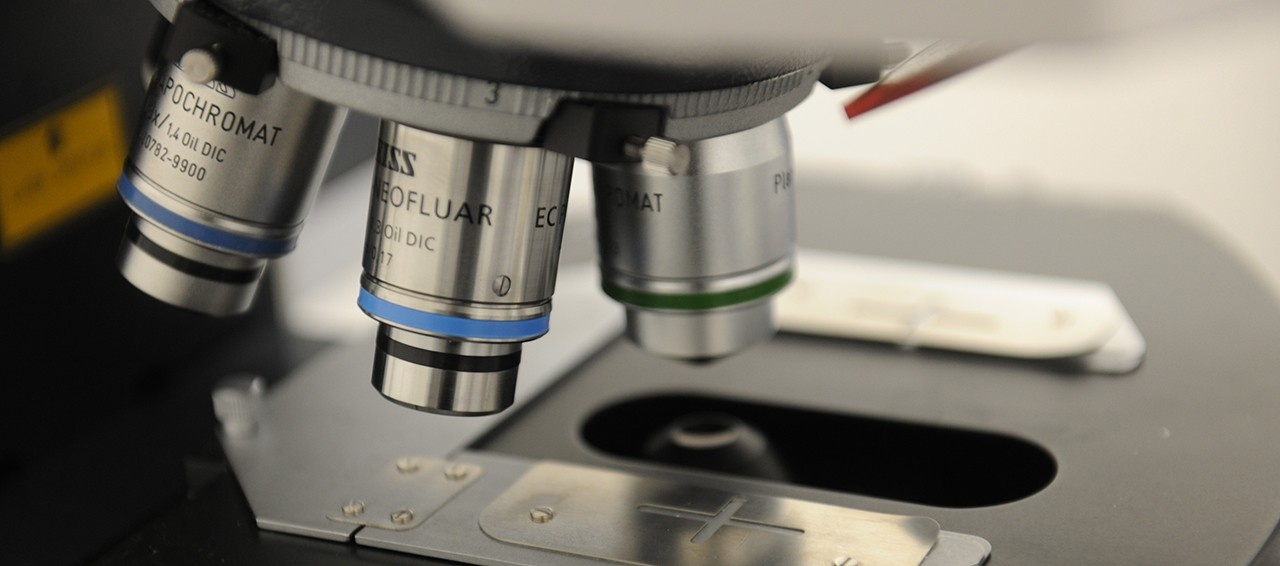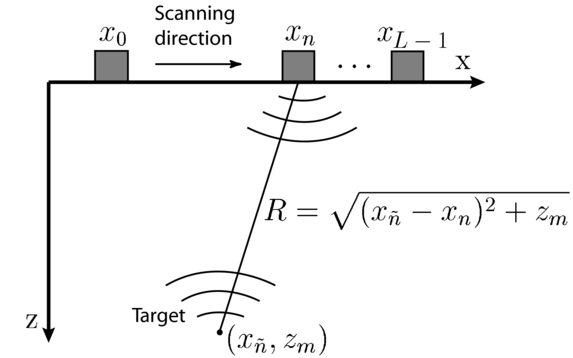Rob Adamson
Acting Director, Professor, School of Biomedical Engineering
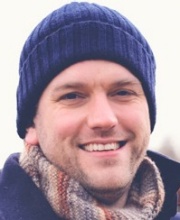
Contact
Robert B A Adamson, PhD
Email: rob.adamson@dal.ca
Phone: (902)497-8579
My research interests are in advanced imaging and therapeutic devices that use light and ultrasound. Current research projects include an optical coherence tomography system for imaging the middle ear through the eardrum, a photoacoustic imaging system for intrasurgical endoscopic imaging and optical monitoring of high intensity ultrasound therapy.
Our Group
Research in my lab is strongly applied and we collaborate closely with industry partners to ensure that advances made in our lab get translated to patients.Ìý If you are interested in contributing to engineering projects that can make a real and immediate difference in patients' lives then there may be a place for you in my lab.
I am currently recruiting students from math, physics, electrical engineering, mechanical engineering and related disciplines at the PhD and MASc level.Ìý Interest and background in imaging, circuit design, mathematical modeling, microfabrication and optics are all an asset.Ìý Please send applications by email to me at rob.adamson@dal.ca
Current Projects
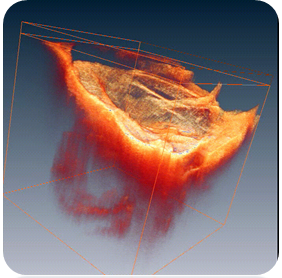 |
Optical Coherence Imaging of the Middle ear: I am using optical coherence imaging techniques to image the middle ear through the eardrum.Ìý Eventually the system will include Doppler capability for real-time functional imaging.Ìý Some of the unique challenges of imaging in the ear are the long scanning range needed, the low numerical aperture and the optical losses in traversing the eardrum.Ìý Despite this, early results obtained with the system look good and I am interested in recruiting top electrical engineering, physics and math students to help move the project forwards.Ìý Ìý |
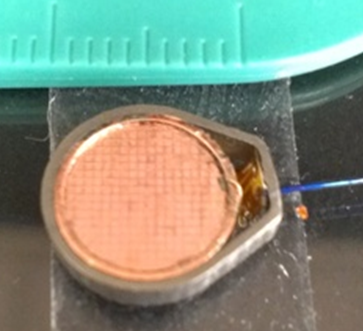 |
Ultrasound-based powering of implanted devices: Medical implants that draw more than a few mW of power are typically powered by magnetic induction coils.Ìý I am exploring the alternative approach of using ultrasound technologies to deliver power.Ìý By taking advantage of modern, high-efficiency piezoelectric materials we've been able to obtain comparable efficiencies to induction coils in much smaller devices.Ìý Key problems that we're tackling are maintaining efficiency as the patient moves and hydration changes, developing a long-lasting dry acoustic coupling, providing communication to turn the link on or off as power demands change and compensating for wave diffraction between the transmitter and receiver. |
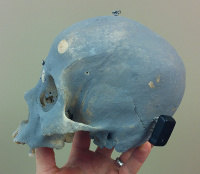 |
A subcutaneous piezoelectrically actuated bone-anchored hearing aid (SPAHA): I am developing aÌý bone-conduction implanted hearing aid for treating conductive hearing loss.Ìý The technology relies on a novel actuation process which uses a flat piezoelectric actuator to cause bending of the skull bone. Ìý Ìý |
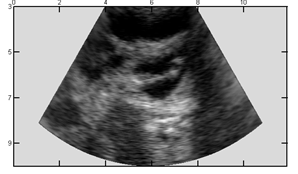 |
High-frequency ultrasound imaging: I collaborate closely with Dr. Jeremy Brown on the development of new high-frequency ultrasound technologies.Ìý The main focus of this research has been the development of a high-frequency ultrasound endoscope for ear imaging, but this work has also branched out into small animal imaging and skin imaging.Ìý High-frequency ultrasound is the focus of my startup company |
|
Advanced techniques for ultrasound and OCT beamforming: I am interested in developing new signal processing and beamforming techniques for OCT and ultrasound imaging to address the specific challenges we encounter in our imaging work.Ìý In particular, I'm interested in exploring two relatively new technologies, Synthetic Aperture Focusing Technique (SAFT) and Compressed Sensing to see how they can be used to extend the depth of field in OCT and to reduce the complexity of high-frequency imaging systems in ultrasound. |
Selected Publications
| M Jahns, D MacDougall, RBA AdamsonÌý- Ultrasonic imaging, 2018 Ìý |
| TG Landry, ML Bance, RB Adamson, JA BrownÌý- Hearing Research, 2017 |
| Conference Proceedings |
| A. Bezanson, R. Adamson, and J. Brown, Fabrication and performance of a miniaturized 64-element high-frequency endoscopic phased array, in Ultrasonics Symposium (IUS), 2012 IEEE International, 2013, p. Accepted. 1 |
| J Leadbetter, J. A. Brown, R. B. A. Adamson, The design of ultrasonic lead magnesium niobate-lead titanate composite transducers for power and signal delivery to implanted hearing aids, in J. Acoust. Soc Am., vol. 133, May 2013, p. 3268. |
| M. Bance, P. Garland, A. Robert, and B. Jeremy, Middle ear reflectance in various middle ear disease states. in J. Acoust. Soc. Am., vol. 128. ASA, 2010, pp. 2426–2426. |
| P. P. Garland, F. M. Makki, R. W. Deas, R. B. Adamson, J. A. Brown, and M. L. Bance, A lumped parameter mechanical model of tensor tympani muscle contraction of the middle ear. in J. Acoust. Soc. Am, vol. 128. ASA, 2010, pp. 2426–2426. |
| R. W. Deas, R. B. Adamson, P. P. Garland, M. Bance, and J. A. Brown, Combining auditory and tactile inputs to create a sense of auditory space. in J. Acoust. Soc. Am., vol. 128. ASA, 2010, pp. 2410–2410. |
| R. B. Adamson, C. L. McKnight, W. A. Alian, M. L. Bance, D. A. Doman, and J. A. Brown, Three-dimensional laser Doppler vibrometry of the dry human skull. in J. Acoust. Soc. Am., vol. 128. ASA, 2010, pp. 2363–2363. Ìý |
| J. Brown, Z. Torbatian, P. Garland, R. Adamson, R. V. Wijhe, J. Savage, and M. Bance, High-frequency ultrasound Doppler velocimetry measurements of intra-cochlear structures in human temporal bones. in J. Acoust. Soc. Am., vol. 128. ASA, 2010, pp. 2305–2305. |
| R. B. A. Adamson, M. Bance, and J. A. Brown, A miniature, ultrasonic transcutaneous energy transmission system for powering implantable medical devices. in J. Acoust. Soc. Am., vol. 128. ASA, 2010, pp. 2281–2281. Ìý |
| Z. Torbatian, P. Garland, R. B. A. Adamson, M. Bance, and J. A. Brown, Direct measurement of basilar membrane motion using pulsed- wave Doppler high-frequency ultrasound, in Proceedings of the International Mechanics of Hearing Workshop, vol. 11. AIP, 2011, pp. 430–431. |
| H. Vihvelin, J. Leadbetter, J. A. Brown, and R. Adamson, A system for ultrasonic transmission of power and signal to an implanted hearing aid, in J. Acoust. Soc Am., vol. 133, May., p. 3268. |
| A. Bezanson, R. Adamson, and J. Brown, A low-cost high frame-rate piezoelectric scanning mechanism for high-frequency ultrasound systems, in Ultrasonics Symposium (IUS), 2011 IEEE International, Oct., pp. 458– 461. 2 |
| P. Garland, A. Bezanson, R. Adamson, and J. Brown, Experimental and finite element model directivity comparison between PZT and PMN-PT kerfless arrays, in Ultrasonics Symposium (IUS), 2011 IEEE International, Oct., pp. 365–368. |
| ÌýZ. Torbatian, R. Adamson, M. Bance, and J. Brown, Experimental verification of a split-aperture transmit beamforming technique for suppressing grating lobes in large pitch phased arrays, in Ultrasonics Symposium (IUS), 2011 IEEE International, Oct., pp. 1139–1142. |
| H. Imam, R. Adamson, J. Brown, and Y. Ma, Two-dimensional (2D) micromirror with enhanced tilting angle using active control methods, in Optical MEMS and Nanophotonics (OMN), 2012 International Conference on, Aug., pp. 113–114. |
| Z. Torbatian, R. Adamson, M. Bance, and J. A. Brown, Transmit beamforming techniques for suppressing grating lobes in large pitch ultrasonic phased arrays, in Proc. SPIE, vol. 7968, 2011, pp. 79 680R–79 680R–8. Ìý |
| Patents |
| R. Adamson, J. Leadbetter, and J. Brown, Acoustic transmitter and implantable receiver, U.S. Provisional 61/821 185, May 8, 2013. |
| A. B. Bezanson, R. B. A. Adamson, and J. A. Brown, Ultrasound endoscope and method of manufacturing thereof, U.S. Provisional 61/681 320, Aug 9, 2012. |
| P. P. Garland, A. B. Bezanson, R. B. A. Adamson, and J. A. Brown, Piezoelectric materials and methods of property control, U.S. PCT WO2013/056 374 A1, Oct 18, 2011. |
| A. B. Bezanson, J. A. Brown, and R. B. A. Adamson, Scanning system, U.S. Provisional 61/548,337, Oct 18, 2011. |
| Z. Torbatian, J. Brown, R. Adamson, and M. Bance, Ultrasound imaging system using beamforming techniques for phase coherence grating lobe suppression, U.S. PCT 2012/0 296 215A1, 2010. |
| R. W. Deas, R. B. A. Adamson, M. Bance, and J. A. Brown, Method and system for driving bilateral bone anchored hearing aids, U.S. Provisional 61/353,834, June 8, 2010. |
| J. A. Brown, R. B. A. Adamson, and M. Bance, Personal listening device, U.S. PCT 2011/46 879, August 9, 2010. 3 |
| Book Chapters |
| M. Bance, R. B. A. Adamson, and R. W. Deas, Cochlear Implants and Other Implantable Hearing Devices. Plural Publishing, 2012, Chapter 4: Bone- Conduction Hearing Devices |
Ìý
Ìý
